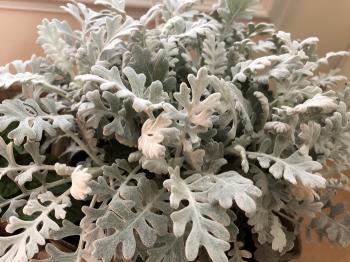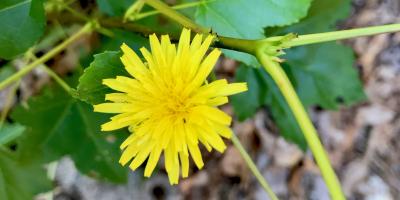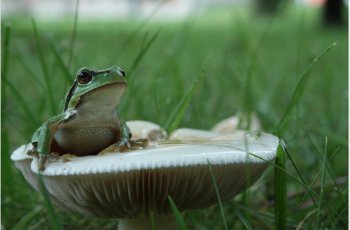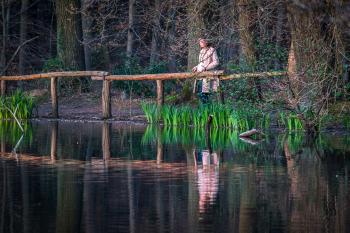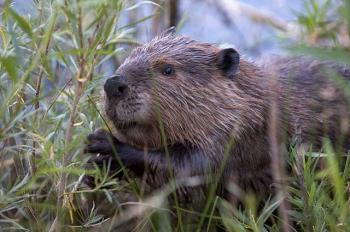Users Who Spiked

WHAT'S NOT TO LICHEN?
Private Notes
Private Notes
Notes
Have you ever heard that old wives' tale that you can find your way in a forest by observing which side of the trees mosses are growing on? It is said that mosses grow only on the North sides of trees and so if you can find the moss, you can get your bearings. There are more than a few problems with this, however, and a sturdy GPS device will do you much better (just remember to take extra batteries). One issue of note is that a lot of things grow on trees. Depending on what part of the world you're in, you can find mosses, ferns, lichens, and other epiphytes clinging to all sides of a tree trunk. Naturally, the more moisture in an area, the more life you're bound to find. But even if this were a one-hundred-percent reliable way to navigate your way out of a forest, you'd first need to be able to identify a moss.
One life form that often gets mistaken for moss is lichen. Lichens might get confused with mosses because they can also be green and are sometimes found growing in the same habitat. Some lichens can look like they have leaves or stems. Some even have misleading names like "reindeer moss," but aren't related to mosses at all. While mosses are plants, lichens are not. The photo above shows two types of Cladonia lichens growing in the Scottish uplands. They may look like undersea corals but they aren't sea life either. Lichens are fungi. More specifically, they are a partnership between a fungus and an alga (and a third partner, but we'll get to that). Algae is the name for a group of diverse organisms that photosynthesize, meaning they get their energy from the sun. That includes cyanobacteria, seaweed, and a bunch of other things that aren't necessarily genetically related.
Why would an alga and a fungus want to pair up? The bigger partner in this couple is the fungus. It provides most of the structure and protection. Without it, the alga would just be sort of a green squishy blob. The alga can take sunshine and transform it into usable energy. So, the fungus gives it support and takes some energy in return. It seems like a pretty swell arrangement for them both and is apparently very successful. Lichens are so plentiful, in fact, that they cover an estimated six percent of the Earth's surface. They come in thousands of different forms, colors, and partnerships. There are many species of both that interact with each other, but neither seem to exist on their own. That means the types of fungi that form lichens aren't usually found wandering around without their algal partners.
Until recently, scientists couldn't quite figure out why attempts to grow lichens in the lab were unsuccessful. There was something missing in the equation. It wasn't until 2011 - that's 150 years after the first two partners were discovered - that the third, key part of the lichen was found. And it turned out to be…wait for it…another fungus! That may seem a bit anticlimactic, but it's really a pretty exciting discovery. The recently-discovered fungus belongs to an entirely different category of fungi than the other. It's also very tiny and hiding in the structure of the bigger one. The Atlantic has published a great article about this breakthrough (https://www.theatlantic.com/science/archive/2016/07/how-a-guy-from-a-montana-trailer-park-upturned-150-years-of-biology/491702/) that's worth a read.
Where does the tree come into play? The tree is pretty much just a spot for the lichen to cling to. The lichen doesn't take anything at all from the tree; no water, no nutrients, no energy. Lichens don't have roots either, so there's nothing penetrating into the tree. Generally, lichens don't grow on the leaves of plants, so it's not even obstructing the tree's ability to get sunlight. It's not a parasite, a pathogen, or even a mutualist. The lichen would be just as happy growing there if the tree was a rock or a building instead.
It's amazing how something that looks like a bit of green crust on a tree trunk can be so complex. There are scientists who devote their careers to studying lichens. One such person is Dr. Frank Bungartz. He's a researcher at Arizona State University who functions as the Collections Manager of Lichens and Digital Data. He's also worked with the Charles Darwin Foundation. Dr. Bungartz has studied lichens not only in Arizona but also in Mexico and the Galapagos Islands, where he worked on a guide to ICUN red-list species. He was generous enough to spend some time with me last year to talk about his work. You can hear our conversation on my podcast, Fungi Town. Dr. Bungartz is featured in episode 04: Lichen or Not (https://www.fungitown.org/e/episode-04-lichen-or-not/).
Comments
Please login to post comments on this story






















